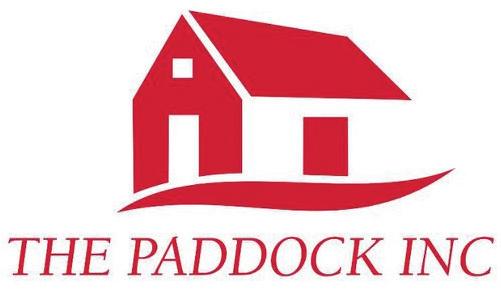
5 minute read
Grand Prix Guidance
The Equine Forelimbby Mark R. Baus, DVM
In the architecture world, the expression “form follows function” is used to describe the shape of an object based on its intended purpose. As one of the world’s greatest athletes, the horse’s form is designed to function beautifully for many endeavors. For the sake of this discussion, we will divide the horse’s form into three distinct areas: the forelimb, the hind limb, and the axial skeleton (the neck and back). Let’s start with the front legs.
The primary function of the horse’s forelimb is to bear the body’s weight while standing but even more so while moving. The hind limbs propel the body forward and skyward, but it is the front limbs that provide the support system for holding the body up during the landing phase. As such, the front limb is a pillar limb with an exquisite suspension mechanism on the lower limb to mitigate the jarring forces that occur during the load-bearing phase of the stride.
The front limbs have a unique system of tendons and ligaments called the stay apparatus to stabilize the limbs while standing and moving. The stay apparatus locks the shoulder, elbow, and knee into a loadbearing position with minimal muscle exertion. Although this helps the horse remain standing for long periods of time without fatigue, the key function of the stay apparatus is to ensure that the limb is locked into a straight column during athletic function. Can you imagine how precarious it would be for a horse to land after a fence with a front limb prone to collapsing? Thankfully the stay apparatus prevents this from happening.
If the upper half of the forelimb functions as a pillar, the key function of the lower limb is based on the hoof and the suspensory apparatus. The hoof provides the interface between the horse and the ground during the impact of landing. Consequently, it is prone to innumerable and significant distortions and forces during athletic function.
The suspensory apparatus consists of the superficial flexor tendon, deep flexor tendon, suspensory ligament, sesamoid bones, and the distal sesamoidean ligaments. This collection of tendons, ligaments, and bones supports the lower limb by absorbing the body’s mass slowly on impact and then releasing the impact with an upward push, much like a spring.
If a horse survives the rigors of development during his or her early years, it is unusual for a problem to develop in the
©katmorning

upper forelimb. However, the hoof and the suspensory apparatus are prone to serious injuries during their athletic years. The incidence of these injuries will depend on the horse’s conformation and the degree of use the horse is subjected to.
If your goal is to use your horse at an optimum level for a long period of time, what are some of the conformational defects you should be aware of? Any pillar bearing weight does it best when it is as straight and vertical as possible. If the limb is crooked at any level (toe-in or toe-out defects especially), uneven forces will be applied to the affected joints causing inflammation and subsequent arthritis. If the knee is bent forward (over-in-the-knee) or back (back-in-the-knee), excessive strain will be applied to the tendons and ligaments above and below the knee.
Conformational faults that affect the suspensory apparatus are related to the length and angle of the pastern. This is also referred to as fetlock angle and pastern length. The lower limb, especially as it concerns the suspensory apparatus, is a perfect example of a living physics lesson. Strain on the suspensory apparatus is defined by three forces: The force applied (body weight magnified by running and jumping), the length of the lever arm (pastern length), and the fetlock angle. Therefore, long pastern length coupled with a low fetlock angle (“dropped” fetlock) will result in excessive strain on the suspensory apparatus. If your horse is overweight, or if you ask too much of him, this strain is magnified even further.
An upright fetlock angle or short pastern length will transfer the impact of landing away from the suspensory apparatus and directly up the bony column. Therefore, these horses will have limited athletic ability and will incur more problems in the bony column (osteoarthritis) and less so in the suspensory apparatus.
In my experience, horses with long pasterns and low fetlock angles tend to make the most brilliant athletes but their athletic career is usually shorter than a horse whose lower limb conformation is more normal.
How do you identify lameness in the front limb? It’s quite simple. While your horse is trotting (preferably in circles, with a rider, on a firm surface), watch his head. If the rider is posting, the head will come up when the lame limb is landing. Usually the lame limb is on the inside of the circle but occasionally it is on the outside of a circle. Outside limb lameness is a signal for specific causes of lameness and is harder to identify. Posting on the wrong diagonal in a circle will usually accentuate lameness in the outside limb.
Now that we’ve reviewed the basic form and function of the forelimb, in the Fall/Winter issue, we’ll take a look at the hind limb.

The Totally Stocked English Tack Shop
Fitting You is What We Do Best!
Great deals on your favorite equestrian gear for the whole family including your horse!
New and experienced equestrians recognize and appreciate the quality and value of the equestrian products in the shop and online.
55 Rose Hill Road, Ledyard, CT
Mon. - Sat. 10-6, Sun. 12-4
(860)464-1559 www.thepaddockinc.com
y
Katie Hylen Mark R. Baus, DVM founded Grand Prix Equine in 2009. He’s provided care to horses in the same region and for many of the same clients for more than 30 years. Mark began the Connecticut Equine Podiatry Group to foster relationships between farriers and veterinarians.








